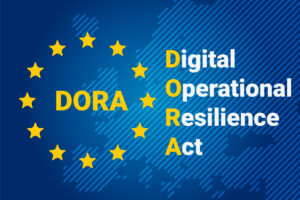In a world that is becoming increasingly digitized, the banking and financial sector has undergone a dramatic transformation. From mobile banking apps to online transaction portals, customers now enjoy the convenience of handling their finances with just a few clicks. Credit unions, known for their member-centric approach, are no exception to this digital evolution. However, with this convenience comes a significant responsibility: protecting sensitive financial data.
Credit unions, though smaller in scale compared to larger banks, manage a wealth of personal and financial information. This makes them enticing targets for cybercriminals. As such, it’s imperative for credit unions to employ the best IT practices to safeguard their members’ data.
Why Credit Unions?
While one might wonder why hackers would target smaller institutions like credit unions, the answer is quite simple: they often present easier targets. Due to limited resources, some credit unions might not have the advanced cybersecurity defenses that larger banks possess. Furthermore, the close-knit nature of credit unions, while being their strength, can sometimes lead to relaxed security protocols.
Best IT Practices for Credit Unions
- Regular Security Assessments:
- Conduct regular vulnerability assessments and penetration testing. Identifying potential weaknesses before hackers do can prevent future breaches.
- Implement Multi-factor Authentication (MFA):
- Require multiple forms of verification before granting access. This could be something the user knows (password), something the user has (a phone or hardware token), or something the user is (fingerprint or facial recognition).
- End-to-end Data Encryption:
- Encrypt data not only when it’s being transmitted but also when it’s stored. This ensures that even if data is accessed, it remains indecipherable.
- Educate Employees:
- Often, the biggest vulnerability is human error. Regular training sessions can keep staff updated on the latest threats and safe practices, turning them from potential weaknesses to the first line of defense.
- Regular Backups:
- Store backups in a secure, offsite location. In the event of a ransomware attack, having access to backups can prevent the need to pay ransoms and ensure minimal disruption to services.
- Update and Patch Systems:
- Regularly update software, applications, and operating systems. Many cyberattacks exploit vulnerabilities in outdated software.
- Limit Access:
- Implement a role-based access control system. Ensure that employees can only access the data and systems necessary for their job functions.
- Employ Intrusion Detection Systems:
- Monitor network traffic and set alerts for suspicious activities. Early detection can mitigate potential damage.
A Holistic Approach to Data Protection
It’s essential to recognize that protecting sensitive data is not a one-time effort. As technology evolves, so do the tactics of cybercriminals. Therefore, credit unions must adopt a proactive, holistic approach to cybersecurity. This includes not only implementing the best IT practices but also fostering a culture of cybersecurity awareness.
Conclusion
In today’s digital age, data breaches can cause irreparable damage to an institution’s reputation, not to mention the potential financial losses. For credit unions, where trust and community are foundational pillars, ensuring the security of members’ data is paramount.
Adopting a robust cybersecurity stance is not merely about employing advanced technologies; it’s about integrating these technologies with sound policies, continuous training, and a vigilant mindset.
With the right approach and tools in place, credit unions can ensure they remain safe havens for their members’ financial needs.









